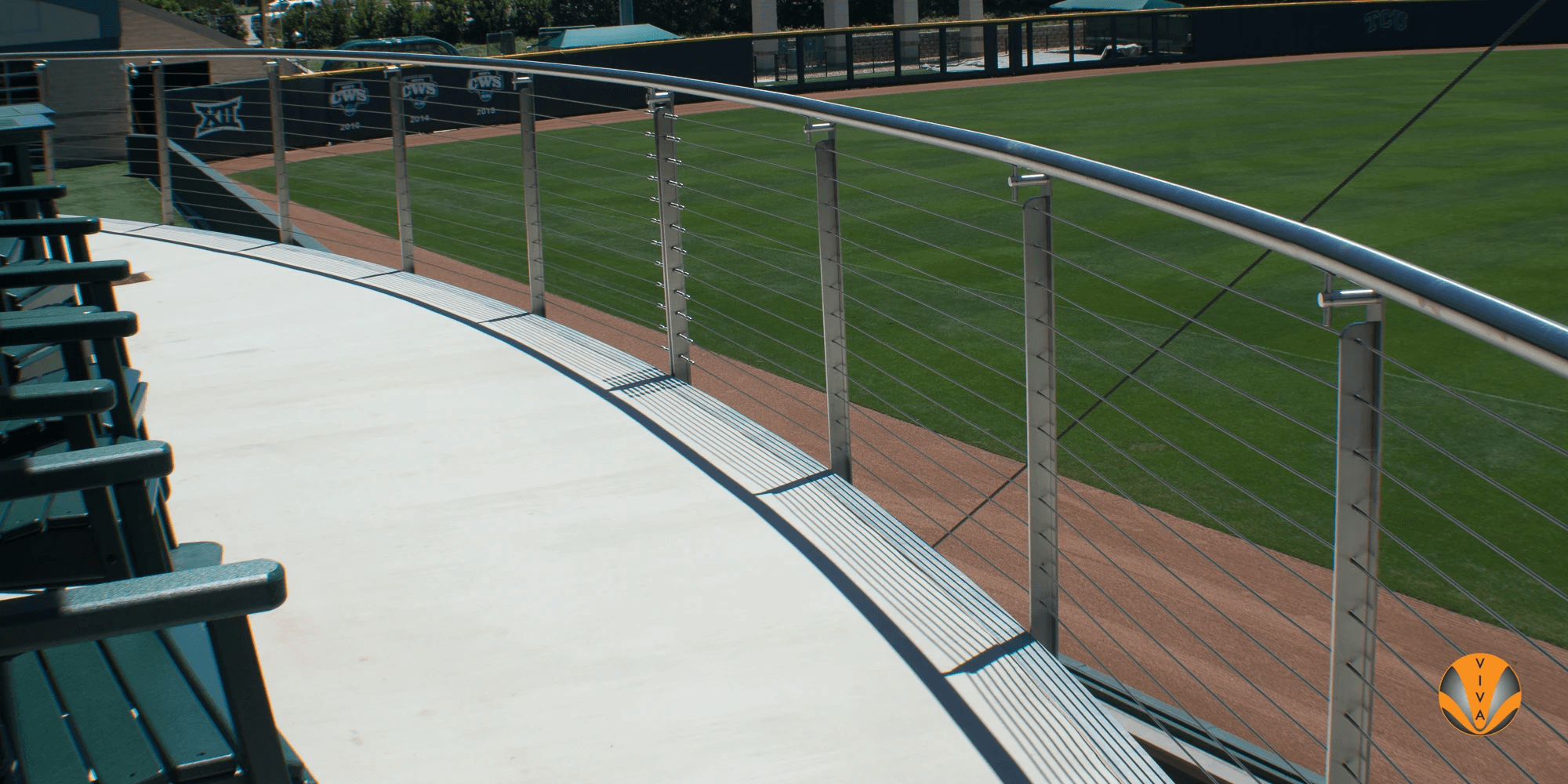Decks, whether in residential or commercial spaces, add areas for gathering, relaxation, entertainment, and even work. Including a deck in a building’s design means following certain guidelines and building codes to ensure the deck is safe and secure for all users such as railings and guards. Other considerations are the materials, mounting options, and customization.
Requirements
Deck railing requirements for commercial applications include the use of a guard that must be located on open-sided walking surfaces, including decks, that are more than 30”, measured vertically to the floor or grade below at any point within 36” to the edge of the open side (IBC 1015.2) .
Guards must be no less than 42” as measured vertically from the walking surface and the openings must be small enough so as not to allow a sphere 4” in diameter to pass through (IBC 1015.4). Guards should be able to withstand a linear load of at least 50 lbs. per linear foot and a concentrated load of 200 lbs. (IBC 1607.9.1 and 1607.9.1.1)
In residential applications, deck railing requirements are similar to those in commercial applications with the exception that the guard must be at least 36” above the walking surface as measured vertically rather than 42” (R312.1.2).
Material
Most cable deck railings are made from 201, 304, or 316 stainless steel, and the option you choose depends on the required level of durability as well as the budget that you’re working with.
Type 201 Stainless Steel
Type 201 stainless steel has the lowest nickel content and is more susceptible to corrosion than the other types, but, that being said, it is still corrosion resistant. This type of stainless steel is best used in indoor applications and may be the best choice if the project is working within a tight budget.
Type 304 Stainless Steel
Type 304 stainless steel is commonly found in many household and business appliances and has a higher nickel content than the 201 types. This means that it’s more resistant to corrosion, but it may cost a little more.
Type 316 Stainless Steel
Type 316 stainless steel—the material used to create the cables in VIVA cable deck railings—has the highest nickel content of the three types. Its superior corrosion resistance and durability makes it ideal for long-lasting exterior applications.
Mounting Options
The location where the cable deck railing posts are mounted can play a role in dictating how they fit into or complement the design. Mounting options typically include fascia, top, or core mount.
Fascia Mount
Fascia mounted posts are mounted to the edge, or fascia, of the deck. This allows the posts to be on the outer edge of the deck rather than mounted to the floor, which creates more available deck space. It also adds an aesthetic touch to the exterior of the deck.
Top Mount
Top mounted posts are installed on the floor of the deck. This is a traditional method of installation, but it will take up some of the deck space.
Core Mount
Core mounted posts are installed in the floor of the deck by drilling a hole and dropping the post in before securing it to the deck with grout. This method is typically used for concrete to ensure that the post is installed securely.
Customization Options
Other customization options for VIVA Railings include wood handrails and top rails, round or flat bar handrails and top rails, curved configurations, FSRTM Free Standing Rail System, and a wide range of powder coating colors. With the options available, you’ll be able to easily customize your own design to create the ideal cable deck railing for your space.





